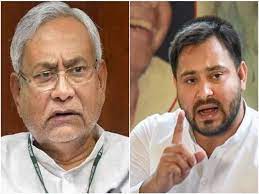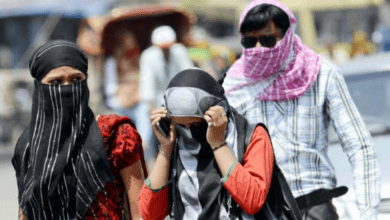Political Parties Compete For Recognition As Over 2 Crore In Bihar Escape Multidimensional Poverty
The terms “bimaru” (ill), “gareeb” (poor), and “pichhda” (backward) have long been used in political discourse to describe Bihar. Given the promises made in relation to this picture, it fits the political narrative. The Chief Minister Nitish Kumar often asks the federal government to grant Bihar “special status,” citing the state’s dearth of industry and other factors.
However, according to the most recent data made public by the federal government, Bihar has made significant progress in rescuing a sizable portion of its inhabitants from the grip of poverty.
Bihar has the biggest percentage of multidimensional poor people of any state, according to an NITI Aayog study titled “National Multidimensional Poverty Index — A Progress Review 2023”. However, this number has substantially decreased.
According to the research, the percentage of multidimensionally poor people in Bihar has decreased from 51.9% in the National Family Health Survey (NFHS)-4 to 33.8%, or 18.1%, of the overall population. In terms of numbers, 2.25 billion (22.5 million) individuals have emerged from multifaceted poverty.
Multiple developmental indicators, including the availability of nutrient-rich food to the population, child and adolescent mortality, maternal health, children’s attendance in school, access to cooking fuel, sanitation, the availability of drinking water, electricity, housing, bank accounts, and assets, are used to measure multidimensional poverty.
The NITI Aayog study states that lowering multidimensional poverty has been greatly aided by improvements in nutrition, maternal health, education, access to cooking fuel, sanitation, and housing. These metrics have significantly improved, which has assisted in lifting a sizable portion of the people out of poverty.
According to the report, in order to reduce multidimensional poverty by 18.1%, nutrition contributes 279,9%, maternal health is 13,1%, education is 18,3%, school attendance is 8,9%, cooking fuel is 8,5%, housing is 8,8%, and sanitation is 7,4%.
According to the study, 42.2% of Bihar’s population experienced nutritional deprivation in 2019–2021, down from 51.8% in 2015–16. Similar to this, in 2015–16, 45.6% of the population lacked access to maternal health care; this number fell to 37.2% in 2019–21. In Bihar, 82.9% of the population lacked access to cooking fuel in 2015–16, while only 63.3% of the population did so in 2019–21.
On the sanitary front, there has also been a significant improvement. When it comes to cleanliness, Bihar’s population presently lacks it to a lesser extent than it did in 2015–16 (53.5% vs. 73.5%).
Access to drinking water, power, and financial services all seen notable improvements. In 2015–16, 2.1% of the population lacked access to clean drinking water, while now just 1.6% of people lack that ability. The percentage of people without access to electricity has decreased from 39.7% to 3.7% during the last several years. At the same time, the research states that just 3.9% of the population is now unable to use financial services, down from 26% before.
A few statistics from the Bihar Economic Survey-2022–2023 report provide credence to this trend.
The Bihar government raised the funding for nutrition under Integrated Child Development Services (ICDS) by 9.7% yearly, according to the Bihar Economic Survey-2022–2023.
According to information from the Bihar Economic Survey, the state’s highest demand for electricity in 2017–18 was 4,965 MW (mega watts), while its supply was 4,535 MW. Peak demand in 2021–2022 was 6,475 MW, while supply rose to 6,627 MW.
Additionally, data indicates a rise in electrical connections. In 2017–18, there were 110,2 lakh customers; in 2021–22, there will be 179,2 lakh.
A total of Rs 1,12,328 crore was spent on social services, health care, and education in 2015–16; this amount is expected to rise to Rs 1,93,122.97 crore in 2020–21, according to the Economic Survey report.
Both the governing party, the JDU, and the opposition parties, the BJP, hurried to claim credit as soon as the data was made public.
“A lot of development work has been done in the state under Nitish Kumar’s leadership,” stated state finance minister Vijay Kumar Chaudhary. Since a lot of development work was done, particularly in rural Bihar, poverty has greatly reduced.
In addition, Chaudhary said that whereas the national average for poverty reduction is 9.89 percent, Bihar has the greatest rate of decrease of all the states at 18.13 percent.
Bijendra Yadav, a different Bihar minister, criticized the Modi administration for denying the state the’special status’. “Rs 92,000 crore were lost by not granting us the status of special state,” he said. What a terrible injustice that is.
Sushil Kumar Modi, a prominent member of the BJP and a former deputy chief minister, said, “Bihar received Rs 5.22 lakh crore more in the past nine years during the NDA administration than it did during the UPA’s ten-year rule. However, it is another matter that Nitish Kumar’s policy of banning alcohol cost the state Rs 50,000 crore.
“Bihar received 2.50 lakh crore more in central taxes during the NDA than under the UPA. In comparison to the UPA, Bihar received Rs 1.81 lakh crore more under the NDA. Should Bihar ministers explain why the state was denied funding? PM Narendra Modi upped the state’s portion of central taxes for the first time since independence by 10%. Backward states like Bihar have benefited from this, he said.
Economists credited the combined efforts of the federal and state governments for the improvement in Bihar’s statistics.
“Bihar has made significant strides in the areas of cleanliness, drinking water accessibility, education, and health. But the national government also plays a part in this, therefore credit for it shouldn’t be given just to the Bihar administration. According to Patna-based economist Nawal Kishore Chaudhary, “This change cannot be labeled a Bihar government alone endeavor since several programmes involve financial backing from the national government.
Nevertheless, Chaudhary thinks it would take a long time to get rid of the poverty stigma attached to Bihar despite the improvement in the multidimensional poverty data.
There is no denying that Bihar has seen a tremendous improvement, but these numbers cannot erase the reality that Bihar is still a developing nation. Distress migration continues to occur despite the fact that multidimensional poverty numbers are on the decline. Bihar’s industrialization is progressing at a very modest rate, and agricultural output is extremely little. In terms of good health, education, employment, and other developing areas, Bihar is lagging far behind. To lose its reputation as an impoverished and backward state, Bihar still has a long way to go.







